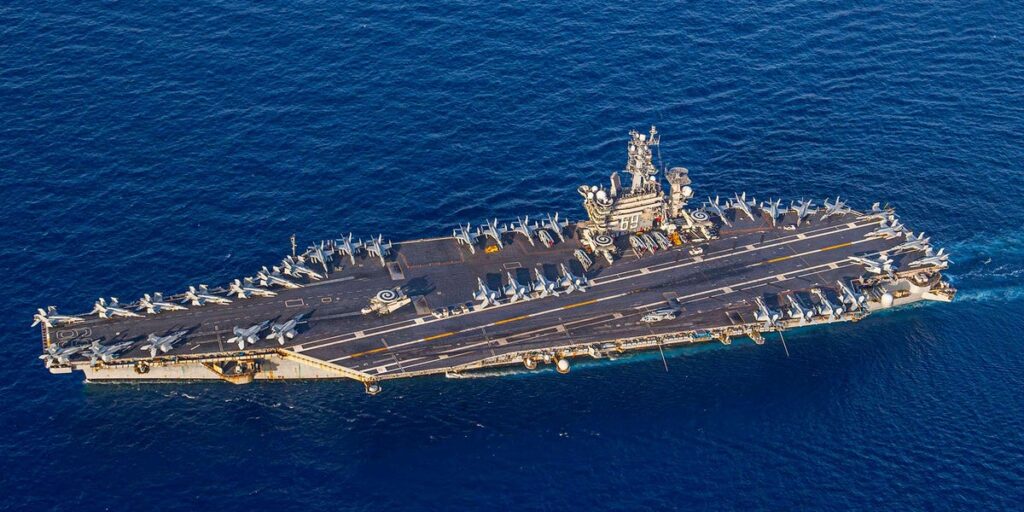The US Navy carrier strike group that has spent months fighting the Houthis from the Red Sea will be staying in the region for a little while longer, as the Iran-backed rebels continue attacking shipping lanes.
The Dwight D. Eisenhower Carrier Strike Group — which consists of the aircraft carrier Ike, the cruiser USS Philippine Sea, and the two destroyers USS Gravely and USS Mason — recently had its restless deployment extended, a US defense official told Business Insider on Tuesday.
It is the latest signal from the Pentagon that a US naval presence is still very much needed in the region to counter the Houthis. American forces are routinely tasked with intercepting missiles and drones launched by the rebels, who have relentlessly targeted ships transiting the Red Sea and Gulf of Aden.
US Secretary of Defense Lloyd Austin first directed the strike group to the Middle East in late October, shortly after the warships left their homeport in Virginia. The move followed an outburst of violence across the region that was triggered by Hamas’ Oct. 7 terror attacks in Israel and the latter’s subsequent retaliatory assault in Gaza.
Austin extended the strike group’s deployment a few weeks ago. He then extended it again in May, according to the Associated Press, which first reported on the development last week. The Ike will now remain in the region for at least another month, and it’s unclear when, exactly, the strike group will ultimately return home.
The deployment extension comes as the conflict shows no signs of slowing down.
Director of National Intelligence Avril Haines told lawmakers in May that the Houthis will likely remain active for “some time” and that Iran — the group’s main backer — is unlikely to stop providing support. She also said US and coalition airstrikes targeting the militants in Yemen have been insufficient at eliminating the threat.
American and British forces have conducted several rounds of joint strikes targeting the Houthis since January. Just last week, for instance, the two militaries hit more than a dozen targets in Yemen. More frequently, though, US forces have unilaterally carried out preemptive strikes targeting Houthi missiles and drones as they are being prepared for launch against nearby ships.
The Eisenhower strike group has already expended more than 500 munitions during its deployment, striking the Houthis in Yemen and engaging their threats, according to Navy officials. This figure includes a collection of air-to-surface, air-to-air, surface-to-air, and land-attack munitions.
After months in this high-tempo combat environment, the Ike and Gravely made a brief port visit earlier in the spring at US Naval Support Activity Souda Bay in Greece, where they were resupplied and rearmed, before returning to the Middle East to continue their maritime security mission.
Secretary of the Navy Carlos Del Toro, meanwhile, disclosed in April that the Navy had fired nearly $1 billion worth of munitions battling the Houthis over the previous six months. The figure has only gone up in the weeks since, with attacks and interceptions continuing on a routine basis, underscoring the growing financial cost of the American naval presence in this ongoing conflict.
In the past week alone, the Houthis have launched dozens of drones and anti-ship ballistic missiles at targets in the Red Sea and Gulf of Aden. Some of the threats were shot down by US forces, while others landed in the water, but at least one commercial ship was struck by missiles.
Read the full article here


